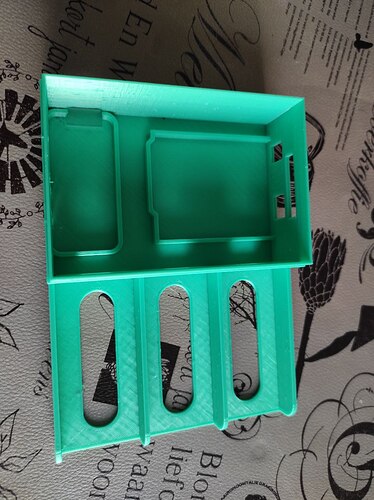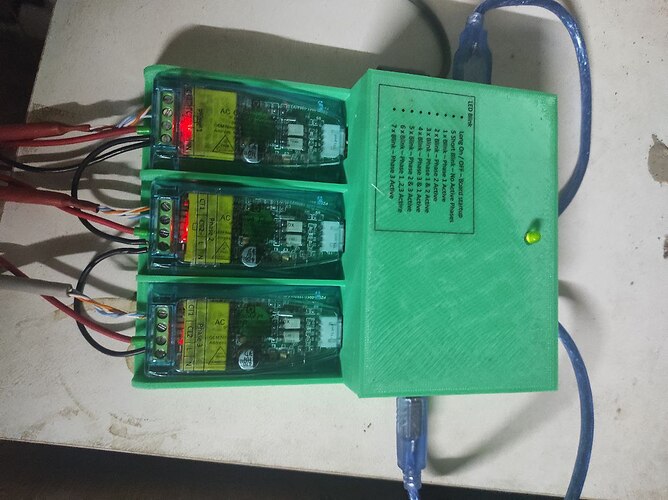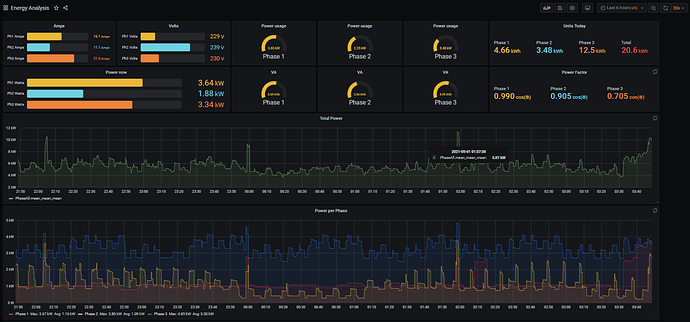Looking for 150 per phase. So 450 in total. The current test that I want to do is for 63A per phase but for future I would prefer the 150a
Just for fun , I did some code where you can run 24 relays with 32 inputs on At mega with Ethernet shield. Its beed running in my house for almost three years with no issues , yet.
If you need a 3 phase meter with such a high current rating then you would probably need to get a meter that requires external CTs. I am quite fond of the Lovato meters. The DMG110 is pretty good for the price and supports Modbus RTU over RS485, so you can easily read all the data you want from it.
http://www.em.co.za/DMG110.html
From a technical viewpoint I still prefer the EM24 over the ET340. The ET340’s total energy counter is broken (it just adds up the individual ones instead of integrating the delta over time), and it has a refresh rate of 2 seconds, whereas the EM24 has a refresh rate (how often a snapshot of your power values are flopped over into the modbus registers) of 600ms. If you plan on using this meter in a future install, this has a big effect on how fast it can respond to power changes (if you intend to limit feed-in into the grid).
@plonkster Interesting! I read in datasheet that can do Gas, cold water, hot water etc.?! - how? or am I misreading?
It has digital inputs, and you can wire a pulse meter to it. There are different models though, some have inputs, some have outputs, it is all in the part number:
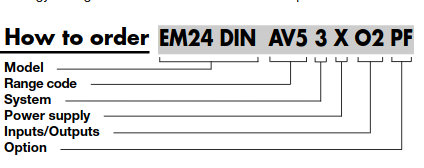
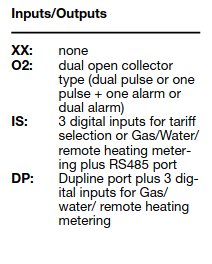
So for example, of the two I have in the testing bin here, one has io options E1 (ethernet) and the other has io option IS, which is the most common one sold in SA and the one you would use with external pulse meters as described.
@JacoDeJongh if you use the EM24 that supports the external CTs, then you can build a Venus Pi based meter. We got 100A and 200A CTs from Segen.
We build meters ourselves and connect on Customer WiFi or using USB powered 3G routers off the Pi USB port to log.
We have built 4 so far:
- EM24 External CT Edition EM24DINAV53DISX
- CTs from Segen
- Raspberry Pi 4 or 3B+
- AC to DC USB Power Supply for Pi
- RS485 to USB for EM24 to Pi USB
- SD Card with Victron Venus OS
The only downside is all we get is L1, L2, L3 power and not voltage, current, pf etc as available from the meter.
See other thread about that here: https://energytalk.co.za/t/getting-pf-and-other-details-from-em24
Ps. For internet, we usually use TP-Link MR-3020 powered from Pi USB port with an old skool USB dingle inserted.
I’ve been scouring the internet and found some thing that fited my needs and more importantly my budget. It is called a “PZEM-004T” and so far so good. You still need to hack the unit together but price wise you can go quite a lot cheaper than any solution that I have seen so far.
The PZEM-004T is a standalone energy monitor that transmit the data via serial port and the measurement accuracy is rated at 0.5% witch is more that good enough for my needs.
My needs were -
- Log the data to a SD card every x seconds (In my case 10 seconds)
- Have the option to remotely view the data
- Needed 3 Phase
- Measure up to 100 amps
There is a couple of Arduino Libraries available to read the data from the unit so I decided to go that way and with software serial I could also read three units.
The setup started small ( Uno with a SD Card Shield but quickly got babies). It ended up with the following
- Rpi Zero - Loaded with Raspbian , Node Red (If a hammer is the tool you have everything looks like a nail and I know Node Red well ) , Influxdb and Zero tier One for remote connection.
- Arduino Uno
- SD Card Shield
- RTC Module - This was so that I could add a time stamp to the energy.csv file on the Uno
- Small 4g Router that I had in the drawer
The Arduino sketch is fairly simple , read the data from the three units and write a line to the SD card in csv format. Then print the data to Serial.
This get picked up on the Rpi through the serial node in Node Red get parsed and written to Influx DB.
Once the data is in Influxdb I can build a dash , graphs what ever the need might be. The results , so far , has been fairly good and I am happy with the overall result.
Here is some Picks
The Unit
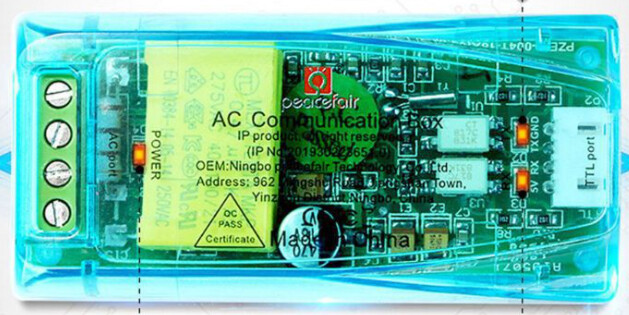
What would a project be if you do not have a case for it…
All the goodies inserted
Closed and ready for Action
I use Grafana ( On my home server) to connect the to DB and play with the data
There is still a couple of improvements that I would like to consider.
- I want load Emon CMS , if the Pi Zero can handle it , rather than Influx it is much more purpose build towards Energy Monitoring but will still need to play with it.
- I used Cat5e cable to extend the CT cables , as they are twisted it should reduce possible noise but the are too hard for my liking so will look for an alternative.
- 90 degree USB cables would also be nice.
- Small Screen on the Pi or Uno just to see that data in Real time without the use of a network connection (Most likely the Uno with a small OLED)
Now - cost to company
- R-pi Zero W - R 260
- USB Hat for the Pi - R 150 (This is Optional but makes the USB connection easier)
- Arduino Uno - R 80 - Imported (Local R 135)
- SD Card Module - R 50 ( Nice shield imported R 50 with RTC unit - Will get this on next import)
- RTC - R 38
- SD card - R 80 + R 80 one for the Pi As well (Got the Cheapest cards I could find
 )
) - PZEM-004T - Local R 450 , Imported (What I did R 115 = R 345 for all three)
- Fun Building the project - Priceless
Total R 1200.00 (Added some extra for bits and pieces)
I didn’t add the modem as this might not be needed in most places.
Not bad for a Three Phase 100A energy monitor with data logging and remote viewing …
That’s insane. BucketList.append()

